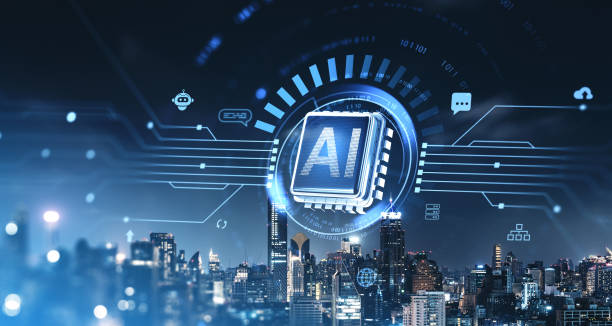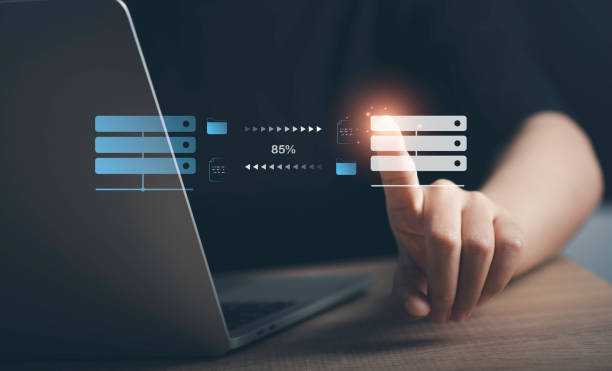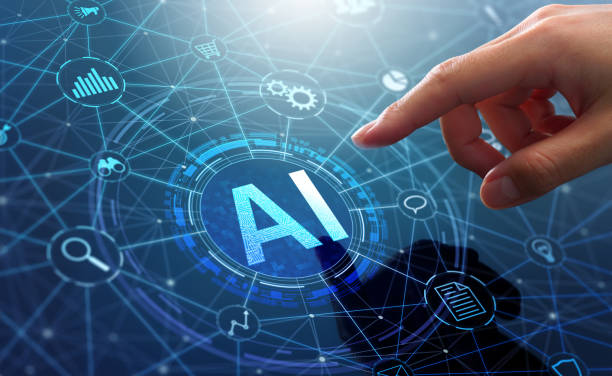What is an Artificial Intelligence Robot and How Does it Work?
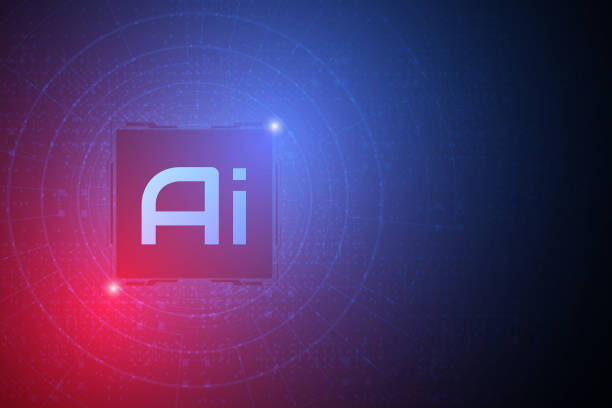
An Artificial Intelligence Robot is a combination of two important technology fields: robotics and artificial intelligence.
In fact, #robots are physical machines that can perform various tasks automatically.
These tasks can include movement, manipulation of objects, interaction with the environment, and so on.
Artificial intelligence (AI), on the other hand, refers to the ability of a computer system to mimic human cognitive functions such as learning, problem-solving, and decision-making.
An AI robot is a robot that uses artificial intelligence algorithms to make decisions and perform complex tasks.
These robots can analyze data, identify patterns, and optimize their performance based on this information.
The way an AI robot works is that various sensors first collect environmental data.
Then, this data is sent to a central processing system that uses AI algorithms to analyze it.
Based on this analysis, the robot decides what action to take and then sends the necessary commands to its actuators to perform that action.
For example, an AI robot designed to move objects in a warehouse first uses cameras and depth sensors to identify objects and obstacles.
Then, using machine learning algorithms, it calculates the best route to reach its destination and finally, using its motors and arms, it moves the objects.
You can read more about artificial intelligence at this Wikipedia link.
Are you tired of your online store having visitors but no sales? Rasaweb solves your main problem by designing professional online stores!
✅ Significant sales increase with targeted design
✅ Perfect user experience for your customers
⚡ Get a free consultation!
Types of AI Robots and Their Applications

AI robots are designed and built in various types, each suitable for specific applications.
Some of the most common types of these robots are #industrial robots, service robots, medical robots, and military robots.
Industrial robots are typically used to perform repetitive and dangerous tasks in factory production lines.
These robots can move parts, perform welding, painting, etc. with high precision and speed.
Service robots are designed to provide services to humans in various environments such as hospitals, hotels, restaurants, and stores.
These robots can perform tasks such as delivering food, cleaning, guiding customers, and so on.
Medical robots are used in surgery, rehabilitation, and patient care.
These robots can perform complex surgeries with high precision, help patients perform rehabilitation exercises, and continuously monitor patients’ vital signs.
Military robots are used to perform various tasks on the battlefield such as reconnaissance, bomb disposal, equipment transport, and so on.
The applications of AI robots are expanding day by day, and it is expected that in the near future, these robots will play a very important role in human life.
For example, AI robots can help improve the quality of human life in education, agriculture, transportation, and many other fields.
Main Components of an Artificial Intelligence Robot

An AI robot consists of various components, each of which plays an important role in its overall performance.
These components include #sensors, actuators, central processing system, and power source.
Sensors are used to collect environmental data.
These sensors can include cameras, depth sensors, temperature sensors, pressure sensors, microphones, etc.
Actuators are used to perform physical actions.
These actuators can include motors, arms, wheels, pumps, etc.
The central processing system is the thinking brain of the robot and is responsible for analyzing data, making decisions, and controlling actuators.
This system usually consists of a powerful computer with a strong processor and a lot of memory.
The power source provides the energy needed for the robot to function.
This source can include batteries, fuel cells, or connection to electricity.
In addition to these main components, an AI robot may also include other components, such as a display screen, speaker, navigation system, etc.
The selection of appropriate components for an AI robot depends on its intended application.
For example, an AI robot designed for surgery needs very precise sensors and delicate actuators, while an AI robot designed for cleaning needs simpler sensors and stronger actuators.
| Components | Descriptions |
|---|---|
| Sensors | Collect environmental data |
| Actuators | Perform physical actions |
| Central Processing System | Analyze data and make decisions |
| Power Source | Provide energy |
Artificial Intelligence Algorithms Used in Robots
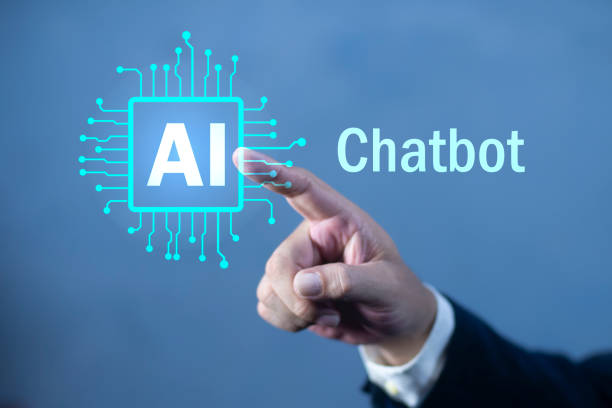
Artificial intelligence algorithms play a fundamental role in the performance of AI robots.
These algorithms allow robots to analyze data, identify patterns, make decisions, and optimize their performance.
Some of the most common artificial intelligence algorithms used in robots are #machine learning, #neural networks, #fuzzy logic, and #genetic algorithms.
Machine Learning allows robots to learn from data without explicit programming.
These algorithms can be used to detect patterns, predict events, and improve robot performance.
Neural Networks are computational models inspired by the structure of the human brain.
These networks can be used to solve complex problems such as image recognition, speech recognition, and natural language processing.
Fuzzy Logic is a mathematical method for modeling uncertainty and ambiguity.
This method can be used to control robots in complex and unpredictable environments.
Genetic Algorithms are search algorithms inspired by the process of natural evolution.
These algorithms can be used to optimize the design of robots and their controllers.
The choice of the appropriate algorithm for an AI robot depends on its intended application and the type of data that is available.
For example, an AI robot designed for facial recognition needs a deep neural network, while an AI robot designed for controlling the temperature in a room can use a fuzzy logic controller.
Genetic Algorithms
Are you annoyed by losing customers due to your online store’s outdated appearance or slow speed? The Rasaweb expert team solves these problems by designing a professional online store!
✅ Increase customer trust and your brand’s credibility
✅ Stunning speed and excellent user experience
Get a free consultation with Rasaweb now ⚡
Challenges of Developing AI Robots
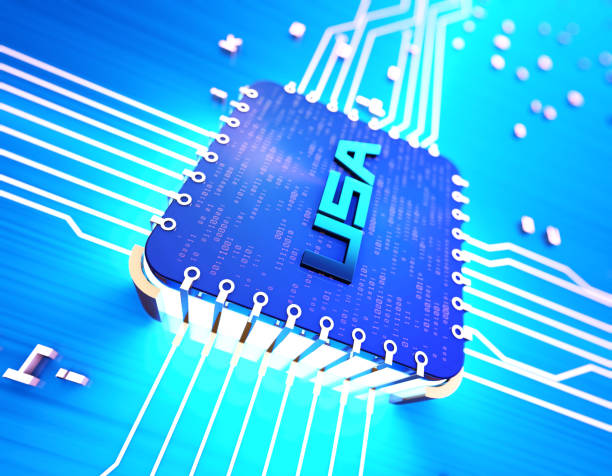
The development of AI robots faces many challenges.
Some of these challenges include #high cost, #technical complexity, #ethical considerations, and #legal limitations.
The cost of developing AI robots is very high.
This cost includes the cost of purchasing hardware, software, hiring specialists, and conducting research and development.
The technical complexity of developing AI robots is very high.
These robots require in-depth knowledge in various fields such as robotics, artificial intelligence, electronics, and mechanics.
Ethical considerations for the development of AI robots are very important.
It must be ensured that these robots do not harm humans, do not violate their privacy, and do not cause discrimination.
There are also legal limitations to the development of AI robots.
Some countries have strict laws regarding the use of robots.
Despite these challenges, the development of AI robots is still a very active and thriving field.
Recent advances in artificial intelligence and robotics have made it possible to build smarter, more powerful, and cheaper robots.
Robotics Association
The Future of AI Robots
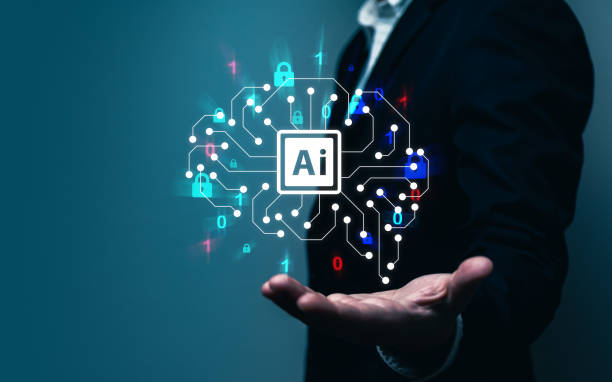
The future of AI robots looks very bright.
It is expected that in the near future, these robots will play a very important role in human life.
Some predictions about the future of AI robots include #expanding applications, #increasing intelligence, #reducing costs, and #social changes.
It is expected that the applications of AI robots will expand in various fields such as industry, services, medicine, education, agriculture, and transportation.
AI robots will become smarter and will be able to perform more complex tasks.
These robots will be able to interact with humans naturally, understand their emotions, and respond to their needs.
The cost of developing and producing AI robots will decrease, and this will make these robots available to more people.
AI robots will bring about many social changes.
These changes can include increased productivity, job losses, changes in family structure, and changes in how humans interact with each other.
Overall, the future of AI robots is very exciting and full of possibilities.
These robots can help improve the quality of human life, solve global problems, and create a better world for everyone.
Features and Programs
The Impact of AI Robots on Jobs

The impact of #AI robots on the labor market is a complex and multifaceted issue.
On the one hand, robots can increase productivity and reduce costs, which can lead to the creation of new jobs in areas related to the development, production, and maintenance of robots.
On the other hand, robots can replace human labor in many jobs, which can lead to unemployment and increased economic inequality.
Some of the jobs that are most at risk of being replaced by robots are repetitive jobs, physical jobs, and jobs that require little specialized skills.
Jobs that are less at risk of being replaced by robots are creative jobs, social jobs, and jobs that require high communication skills.
| Jobs at Risk | Low-Risk Jobs |
|---|---|
| Machine Operators | Healthcare Professionals |
| Production Line Workers | Artists and Designers |
| Drivers | Managers and Leaders |
| Clerical Workers | Teachers and Trainers |
To reduce the negative impacts of robots on the labor market, it is necessary to take measures, such as investing in education, creating new job opportunities in technology-related fields, and providing social support to people who lose their jobs.
Ultimately, the impact of AI robots on the labor market depends on how this technology is managed and the policies that are adopted to address its challenges.
International Labour Organization
Ethical Considerations in the Design and Use of AI Robots
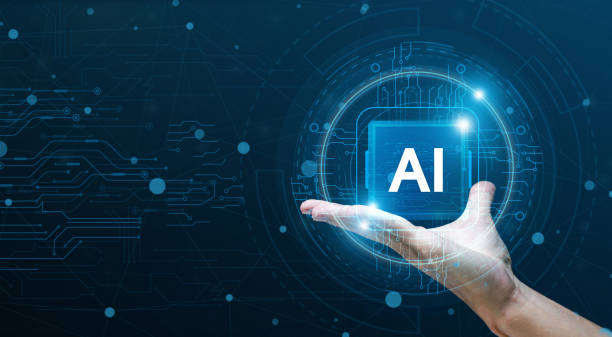
The design and use of #AI robots come with important ethical considerations.
One of these considerations is accountability.
If an AI robot causes an accident, who will be responsible? The robot’s manufacturer, the robot’s user, or the robot itself? Another issue is privacy.
AI robots can collect a lot of information about humans.
How can this information be protected and prevented from being misused? The third issue is discrimination.
AI robots can make decisions based on their algorithms that discriminate against certain groups of people.
How can this discrimination be prevented?
The fourth issue is autonomy.
How autonomous should AI robots be? Should they be allowed to make important decisions without human intervention? To answer these questions, it is necessary to create a strong ethical framework for the design and use of AI robots.
This framework should include ethical principles, laws and regulations, and oversight mechanisms.
Also, it is necessary to increase public awareness of the ethical issues related to AI robots.
Ethical Issues
Does your current website reflect your brand’s credibility as it should? Or does it drive away potential customers?
Rasaweb, with years of experience in designing professional corporate websites, is your comprehensive solution.
✅ A modern, beautiful website tailored to your brand identity
✅ Significant increase in lead generation and new customers
⚡ Contact Rasaweb now for a free corporate website design consultation!
Difference Between AI Robots and Ordinary Robots

The main difference between AI robots and ordinary robots is in their level of #intelligence and #autonomy.
Ordinary robots are usually pre-programmed to perform a specific set of tasks.
They cannot make decisions or adapt to new situations without human intervention.
AI robots, on the other hand, use artificial intelligence algorithms to learn from data, solve problems, and make decisions.
They can adapt to new situations and perform more complex tasks than ordinary robots.
For example, an ordinary robot working on a production line can only perform a series of pre-determined movements.
If a part comes off the production line, the robot cannot detect or solve this problem.
An AI robot working on the same production line can scan its surroundings using cameras and sensors and detect any deviations from normal.
Then, using artificial intelligence algorithms, it can find the best solution to fix the problem and automatically implement it.
In summary, AI robots are much smarter and more autonomous than ordinary robots.
They can perform more complex tasks, adapt to new situations, and generally perform better than ordinary robots.
Daily Technology
The Future of AI Robots in Iran
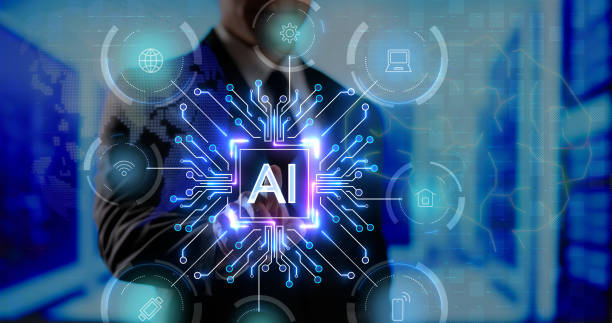
The future of #AI robots in Iran depends on various factors, including investment in research and development, support for startups, and the development of specialized human resources.
In recent years, many efforts have been made to develop artificial intelligence and robotics in Iran.
The Iranian government has implemented various programs to support these fields, including providing financial facilities, establishing research centers, and holding scientific competitions and events.
However, Iran is still behind the leading countries in the field of AI robots.
For Iran to achieve a suitable position in this field, it is necessary to invest more in research and development, support startups, and train specialized human resources.
Also, it is necessary to remove the legal and administrative barriers that exist in the way of the development of AI robots in Iran.
Given Iran’s high potential in the field of artificial intelligence and robotics, it is expected that we will see significant progress in these fields in the near future.
AI robots can help improve the quality of life of the people of Iran in various fields such as industry, agriculture, services, and medicine.
Iran News
Frequently Asked Questions
| Row | Question | Answer |
|---|---|---|
| 1 | What is an AI Robot? | An AI robot is a machine capable of understanding, reasoning, learning, and problem-solving, and it can perform complex tasks with relative autonomy. |
| 2 | What are the most important applications of AI robots? | Key applications include industrial production, customer service (chatbots), medicine and surgery, self-driving transportation, space exploration, and military affairs. |
| 3 | What is the main difference between an AI robot and a regular robot? | A regular robot only follows programmed instructions, while an AI robot can learn from data, make decisions, and adapt to new environments. |
| 4 | How do AI robots learn? | They learn through machine learning algorithms (such as deep learning, reinforcement learning) and processing vast amounts of data, identifying patterns, and improving their performance. |
| 5 | Can AI robots have emotions? | Currently, AI robots do not have real emotions in the human sense. They can mimic or recognize emotions, but they do not have the understanding and experience of them. |
| 6 | What are the current limitations of AI robots? | Limitations include the need for large amounts of data, inability to understand abstract concepts, lack of real creativity, ethical issues, and generalization challenges in new environments. |
| 7 | What is the role of AI in the development of Humanoid Robots? | AI helps humanoid robots walk, maintain balance, understand the environment, interact with humans, and perform complex tasks. |
| 8 | How is the future of AI robots predicted? | AI robots are predicted to become smarter, more autonomous, and capable of performing more complex tasks in everyday life and industry, and their interaction with humans will increase. |
| 9 | Can AI robots replace all human jobs? | It is unlikely that all human jobs will be replaced. Robots take over many repetitive and dangerous tasks, but jobs that require creativity, empathy, and moral judgment will remain. |
| 10 | What ethical and social challenges arise with the expansion of AI robots? | Challenges include issues related to privacy, data security, ethical decision-making by robots, impact on employment, and accountability in the event of errors. |
And other services of Rasa Web Advertising Agency in the field of advertising
Smart Link Building: A new service to increase campaign management through marketing automation.
Smart Digital Branding: A combination of creativity and technology to increase click-through rates by customizing the user experience.
Smart Advertising Campaign: A combination of creativity and technology to attract customers through marketing automation.
Smart Data Analysis: Designed for businesses looking to manage campaigns through Google Ads management.
Smart Content Strategy: Professional optimization to attract customers using user experience customization.
And more than hundreds of other services in the field of internet advertising, advertising consulting, and organizational solutions
Internet Advertising | Advertising Strategy | Advertorial
Resources
What is the application of artificial intelligence? What are its functions?
, What is artificial intelligence? – In simple language + applications, advantages and disadvantages
, What is Artificial Intelligence?
, What is artificial intelligence? Its applications, advantages and disadvantages
? In today’s fast-paced and competitive world, a strong online presence speaks volumes. Rasaweb Afrin Digital Marketing Agency, specializing in SEO, content marketing and responsive website design, helps your business on the path to growth and success.
📍 Tehran, Mirdamad Street, next to Central Bank, Kazerun Jonoubi Alley, Ramin Alley No. 6
“`

